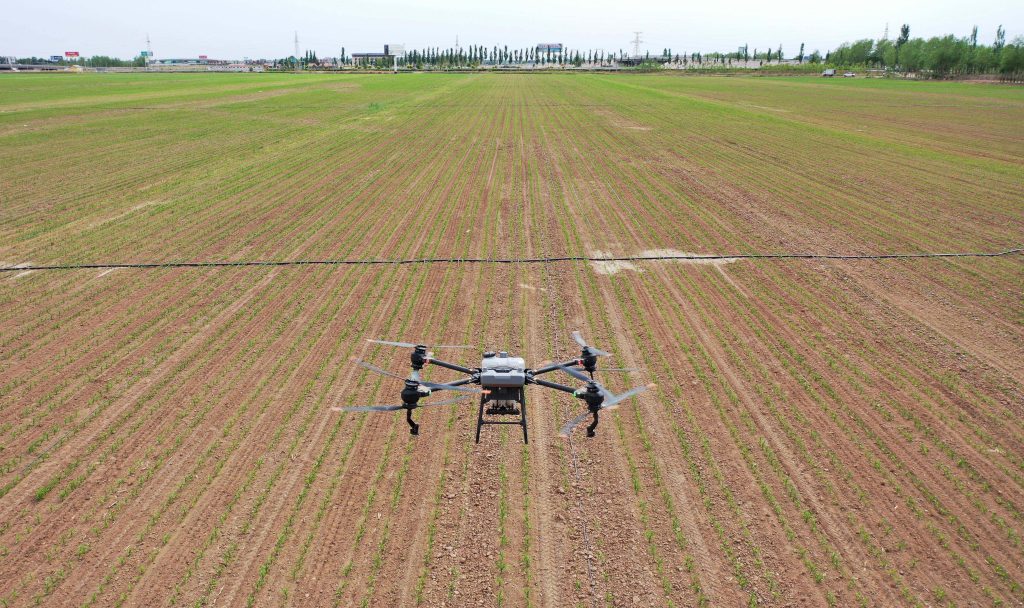What changes will the increasingly mature technologies such as unmanned driving, agricultural Big data and artificial intelligence bring to agriculture? After several years of development, what technological iterations and breakthroughs have been achieved in the bold exploration and pioneering ecological unmanned farm?
In the hot summer, the reporter once again walked into the first ecological unmanned farm in China located in Hefeng Seed Industry, Zhutai Town, Zibo City, and saw that under the multidisciplinary cooperation of the Ecological Unmanned Farm Research Institute of Shandong University of Technology, a more intelligent, greener, and more mature ecological unmanned farm model was presented.
Farmers can easily control various types of unmanned agricultural machinery in the field while sitting in the cloud command center, achieving intelligent and precise automatic operation. This future agricultural vision full of technological charm is gradually becoming a reality.
This year’s wheat harvest season, a unique agricultural machinery show was performed in the fields of Hefeng Seed Industry. Tractors, plant protection machines, harvesters, and agricultural robots of various shapes compete to showcase their “eighteen martial arts”, and their common feature is unmanned driving. These cutting-edge technologies that excited the participants were the latest achievements of the scientific research team led by Lan Yubin, a professor of Shandong University of Technology, who had been working hard for many years and kept upgrading and making breakthroughs.
The reporter saw on site that three unmanned tractors with different horsepower formed a formation, sharing the same operation path. After the rotary tillage operation, the sowing operation was immediately carried out, achieving multi machine collaboration. At the same time, the level of intelligence of autonomous tractors has further advanced. Artificial intelligence technology, combined with ultrasound and millimeter wave radar, can automatically complete the conversion of forward and reverse gears, achieving effective obstacle avoidance.
Plant protection drones with different functions can be said to possess unique skills. Multi functional plant protection unmanned body with multiple functions for delivering and spraying red eye bee pills; The high gap plant protection robot comes with its own sensor, which can achieve attitude measurement, tilt compensation, and high-precision path tracking; The variable spraying robot is equipped with four levels of nozzles with different flow rates, which can perform variable operations for different levels of pests and diseases.
The implementation of intelligent unmanned agricultural machinery operation is inseparable from the support of many “black technologies”. The reporter learned that the ecological unmanned farm is integrated with Precision agriculture aviation technology, unmanned driving, agricultural robots, artificial intelligence, Internet of Things, Big data, cloud computing and many other high-tech.
Green and circular are another highlight of ecological unmanned farms. On the roadside of the farm, there are functional plants such as Amber, Centaurea cyanus, golden leaf elderberry, which can conserve natural enemy insects; Green prevention and control measures such as using biological control lights to lure and kill pests and using insects to control red eye bees on farms greatly reduce the use of pesticides; Adopting an integrated water and fertilizer spraying system to achieve weight loss and water conservation, and adopting an ecological fertile soil cultivation mode to protect the soil.
Ecological unmanned farms have not only innovated and reshaped agricultural production methods, greatly improved the efficiency and precision of agricultural production operations, but also brought obvious benefits directly. The reporter learned that with the strong support of various high-tech agricultural technologies, the ecological unmanned farm of Hefeng Seed Industry has reduced the use of pesticides, fertilizers, and water by more than 30%, reduced labor costs by more than 50%, increased the average operating efficiency of cultivation and management by more than 20%, and improved comprehensive economic benefits by 30%. In 2020, the Hefeng Ecological Unmanned Farm ranked first in the country with a yield of 856.9 kilograms per mu of winter wheat, breaking the national yield record.


No reply content